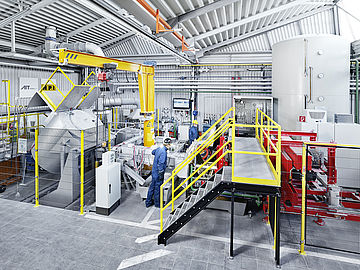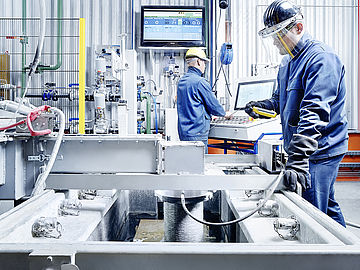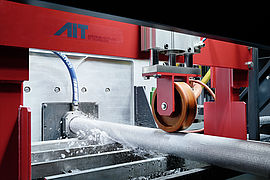The use of production related, but notable smaller plants compared to production facilities, allow the development of plant technology and the testing of new alloys under the same conditions as in later production, but in significantly more economical test quantities. The combination of these Production related plants (see above) and using scientific methods of materials research allows efficient development of process-optimized alloys and industry-related process developments.
Our services
- Process technology about casting parameters like casting speed, cooling, lubrication, mould technology and surface properties
- Alloy design (effect of individual alloy elements on alloy properties), adjust microstructure characteristics, adjustment of structure / heat treatment
- Melting technology and temperature control, melt quality (composition, purity), melt treatment, grain refinement, modification
- Characterization (Spectro, metallography, DSC, dilatometer)
- Numerical methods of alloy development and process technology: microstructure simulation (MathCalc), casting simulation: mould filling and solidification







![[Translate to English:] LKR Standort](/fileadmin/_processed_/2/8/csm_AIT_LKR_Standort_4fe61c1df0.jpg)
